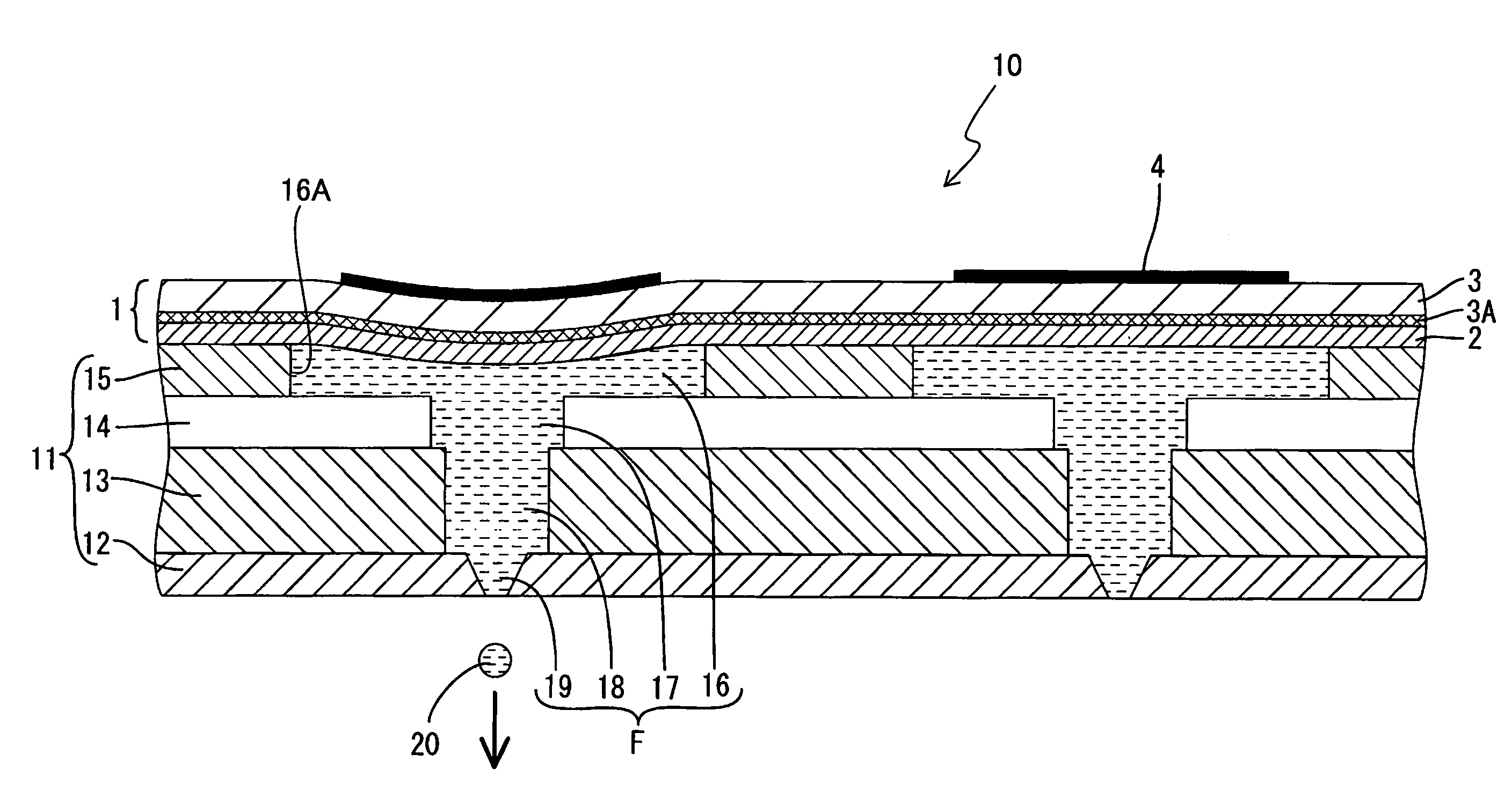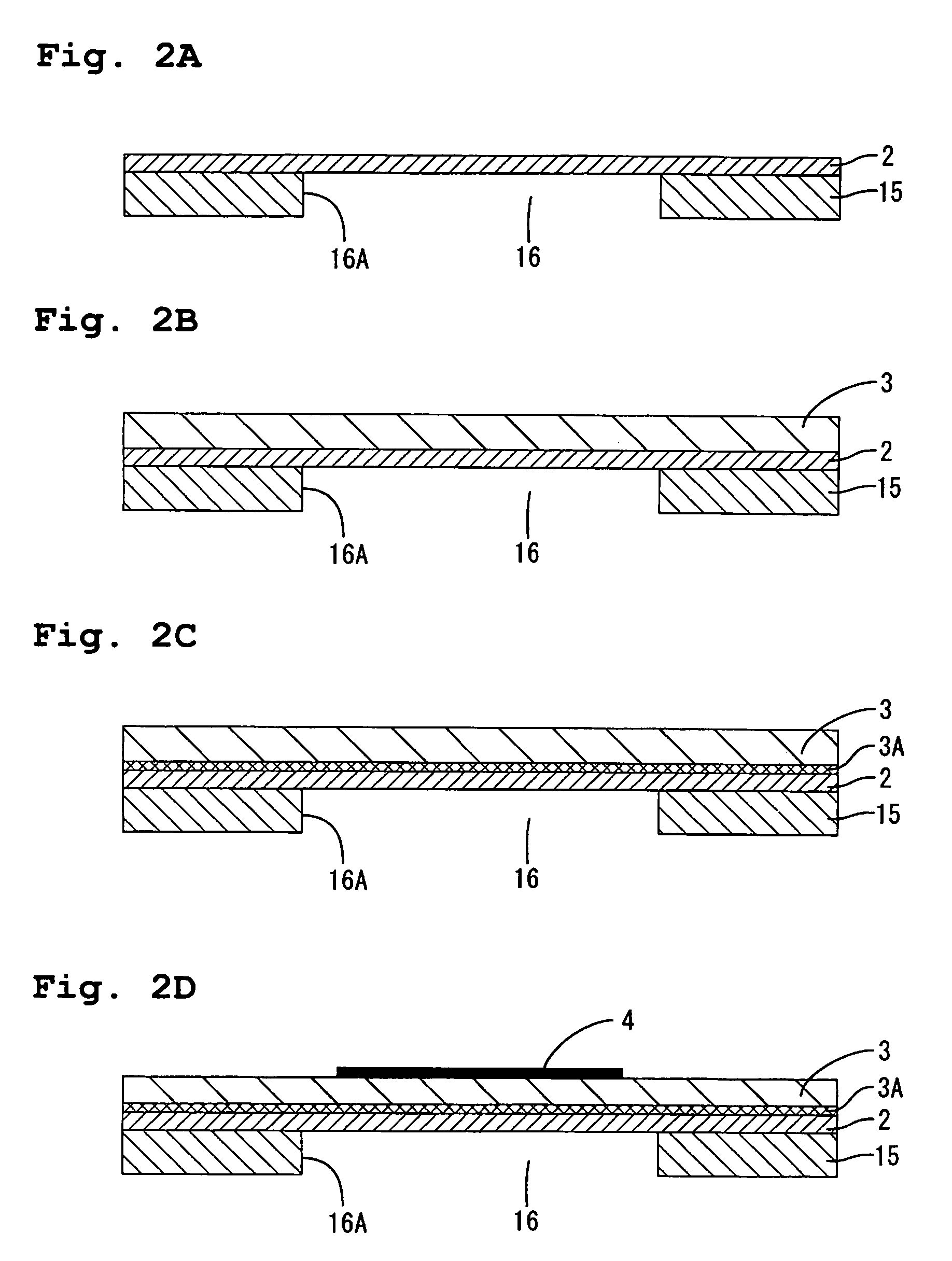Method for producing piezoelectric actuator and method for producing ink-jet head
- Summary
- Abstract
- Description
- Claims
- Application Information
AI Technical Summary
Benefits of technology
Problems solved by technology
Method used
Image
Examples
example 1
[0105] In Example 1, a piezoelectric film (PZT) with a thickness of 7 μm was formed on a substrate (SUS430) in the same manner as in the above-described preparatory tests. Then, the substrate with the piezoelectric film formed thereon was introduced into a muffler furnace with a temperature raised to 850° C. and held for 1 min (this process is the first annealing step).
[0106] Then, the substrate was transferred to another muffler furnace with a temperature raised to 700° C. and held therein for 3 min. The substrate was thereafter transferred to another muffler furnace with a temperature raised to 600° C., held therein for 5 min, then transferred to another muffler furnace with a temperature raised to 500° C., and held therein for 15 min (this process is the second annealing step). The substrate was then removed from the furnace and cooled to room temperature by natural cooling. A piezoelectric actuator was then constructed in the same manner as in the preparatory tests.
[0107] The ...
example 2
[0109] In Example 2, a piezoelectric film (PZT) with a thickness of 9 μm was formed on a substrate (SUS430) in the same manner as in the preparatory tests.
[0110] Then, the piezoelectric film surface was irradiated for 2 min by using an infrared lamp (manufactured by Inkridge Co., HSH-1). In this process, the irradiation intensity was adjusted so that the surface temperature of the piezoelectric film becomes about 1000° C. (this process is the first annealing step).
[0111] Then, the piezoelectric film was irradiated was for 5 min after the irradiation intensity was adjusted so that the piezoelectric film surface has a temperature of about 600° C. Then, the piezoelectric film was irradiated for 10 min after the irradiation intensity was adjusted so that the piezoelectric film surface has a temperature of about 500° C. (this process is the second annealing step). The piezoelectric film was then cooled to room temperature by natural cooling. The piezoelectric actuator was then construc...
example 3
[0114] In example 3, PZT added with Nb was used as a material for forming the piezoelectric film. In Example 3, first, a piezoelectric film with a thickness of 7 μm was formed on a substrate (SUS430) in the same manner as in the preparatory tests. Then, this piezoelectric film was subjected to annealing under the same conditions as in Example 1. Then, a piezoelectric actuator was constructed in the same manner as in Example 1.
[0115] The piezoelectric actuator fabricated in this example was tested in the same manner as in the preparatory tests. The applied electric field in the polarization treatment was 150 kV / cm.
[0116] As a result, the coercive electric field Ec was 35 kV / cm, the residual polarization Pr was 24 μC / cm2, and Pr / Ec was 0.69. A good piezoelectric characteristic was thus obtained.
PUM
| Property | Measurement | Unit |
|---|---|---|
| Temperature | aaaaa | aaaaa |
| Temperature | aaaaa | aaaaa |
| Temperature | aaaaa | aaaaa |
Abstract
Description
Claims
Application Information
 Login to View More
Login to View More - R&D
- Intellectual Property
- Life Sciences
- Materials
- Tech Scout
- Unparalleled Data Quality
- Higher Quality Content
- 60% Fewer Hallucinations
Browse by: Latest US Patents, China's latest patents, Technical Efficacy Thesaurus, Application Domain, Technology Topic, Popular Technical Reports.
© 2025 PatSnap. All rights reserved.Legal|Privacy policy|Modern Slavery Act Transparency Statement|Sitemap|About US| Contact US: help@patsnap.com



